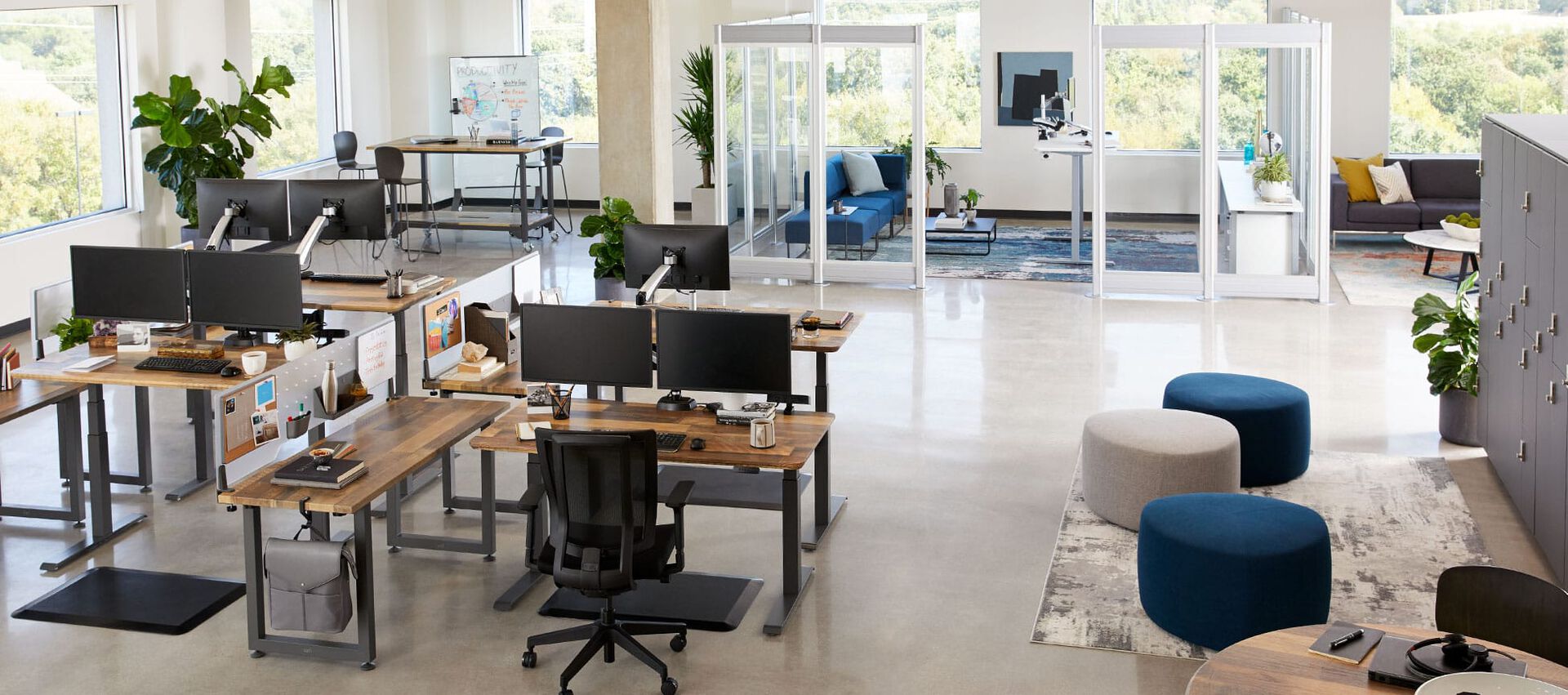CREATING A WORKSPACE FOR CHANGING BUSINESS NEEDS
If your business is in the midst of a growth spurt, creating a flexible workspace is crucial to keeping employees happy and engaged.
10 Minutes Reading
If your business is in the midst of a growth spurt, creating a flexible workspace is crucial to keeping employees happy and engaged. The data shows that only 13 percent of global workers are highly engaged and highly satisfied with their workplace experience. Yet in flexible workspaces — those in which employees can choose how and where they work — 88 percent of employees report being highly engaged. Here’s how to create a flexible workspace that can adapt to changing business needs no matter how much square footage you have.
As a growing business, you know change is just around the corner. By tapping into furniture that's designed to rearrange quickly and easily, you are prepared for any new milestone. Movable walls, rollable conference tables, and monitor arms attached to desks allow you to adapt and reimagine your office as new team members are hired, or departments are reorganized. This way, your workspace accommodates your needs long after its original design.
Encourage Autonomy
Not every employee wants to work alone in a cubicle, and not every employee wants to share a desk with another workmate. Giving employees the freedom to choose how and where they work not only increases productivity — it also increases job satisfaction and morale. Some factors to help employees feel a sense of autonomy in their workspace is to invest in movable furniture and accessories like sit-stand desks, adjustable privacy panels for quiet work, shared tables and rolling markerboards for instant collaboration, and even privacy booths for phone calls free of interruption or other sensitive work.
Incorporate Health and Wellness
In a Gensler survey of what factors make up an ideal workplace, 34 percent of respondents said they value elements that support “health and well-being.” When you cannot increase square footage, you can use workplace design to promote wellness and consequently drive productivity and performance. One element that supports health and well-being is biophilic design, which encourages companies to add nature to space through plants and natural textures and patterns. Other elements include making use of natural light, reducing noise, and investing in ergonomic furniture and spaces, which encourage movement and interaction.
Make Sure Your Is Tech Flexible
In a flexible workspace, in which employees are scattered around in different seating arrangements and free to move at will, the right tech ensures everyone remains connected. Beyond providing WiFi and network access, there are a number of gadgets built to maintain productivity and collaboration in a flexible workspace. To keep track of people and equipment as they move around your space, consider the indoor mapping tool Jibestream, which provides the security, extensibility, and versatility to meet changing business needs. To encourage collaboration amongst employees, The Serendipity Machine connects co-workers by matching skills, experience, or interests, making it easy for them to find people nearby with the skills they need for a particular job or project. For other ideas on tech built for flexible workspaces, check out this list of gadgets from Allwork.
Facilitate Chance Interactions
When Steve Jobs designed the office space in the headquarters for Pixar, he obsessed over how to structure the atrium, and even where to locate the bathrooms, so that chance encounters were likely to occur. He believed this design would encourage creativity and unplanned collaborations through simple face-to-face interaction. An open office plan and/or unassigned desks are easy ways to facilitate chance encounters. Also integrating central mingling places like Pixar’s atrium and casual nooks for social interaction can lead to creative teamwork you wouldn’t have predicted.
Get more insights into functional office furnishings at Vari.com
Erica Garza is an author and essayist from Los Angeles. Her writing has appeared in TIME, Health, Glamour, Good Housekeeping, Women's Health, and VICE.
References:
- https://info.steelcase.com/global-employee-engagement-workplace-comparison#key-finding-1
- https://facilityexecutive.com/2019/02/do-flexible-workplace-design-and-policies-promote-employee-satisfaction/
- https://www.gensler.com/people-are-asking-for-more-private-space-at-work
- https://www.jibestream.com/
- http://serendipitymachine.com/
- https://allwork.space/2017/12/9-gadgets-every-flexible-workspace-needs-in-2018/
- https://www.linkedin.com/pulse/20141007161621-73685339-why-steve-jobs-obsessed-about-office-design-and-yes-bathroom-locations?trk=tod-home-art-list-large_0&trk=tod-home-art-list-large_0
